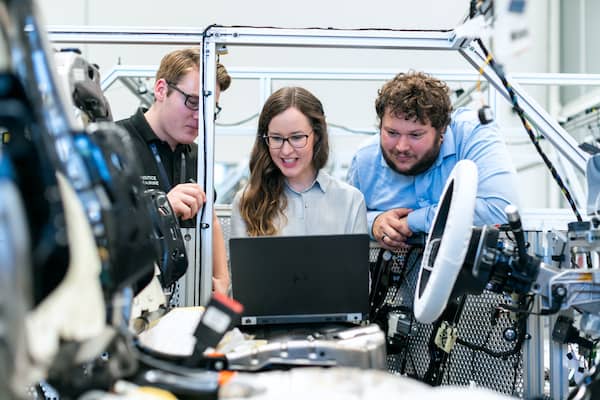Human Factors Engineering in Automotive Testing
Human Factors Engineering in Automotive Testing is a multidisciplinary field that investigates the interaction between human drivers and vehicles during testing phases. This article explores the foundational principles, methodologies, applications, and the transformative impact of human factors engineering on automotive testing, with a focus on enhancing safety, comfort, and overall driving experience.
Optimizing Safety and Performance

Automotive testing is a complex process that goes beyond evaluating vehicle performance; it encompasses the study of how drivers interact with vehicles and testing environments.
This article introduces the key components of Human Factors Engineering in Automotive Testing and its importance in optimizing both vehicle design and driver experience.
Core Principles of Human Factors Engineering in Automotive Testing
- Driver-Centric Design: Placing the human driver at the center of testing processes, considering ergonomic design, control interfaces, and overall user experience.
- Cognitive Workload: Evaluating the mental demands imposed on drivers during testing scenarios, ensuring that cognitive workload is manageable and compatible with safe driving.
- Usability of In-Vehicle Technologies: Assessing the effectiveness and usability of technologies within the vehicle, including infotainment systems, driver assistance features, and connectivity.
- Driver Behavior and Reaction Time: Studying how drivers respond to various stimuli and scenarios during testing, influencing factors such as reaction time and decision-making.
Methodologies in Human Factors Engineering in Automotive Testing
- Driving Simulations: Utilizing realistic virtual environments to replicate driving scenarios and studying driver behavior in controlled settings.
- Real-world Test Tracks: Conducting on-track testing in controlled environments to observe real-time driver reactions to specific vehicle features or challenges.
- Biometric Measurements: Collecting physiological data, such as heart rate and eye movements, to understand the impact of automotive testing on driver stress and engagement.
- Usability Testing: Assessing the ease of use, learnability, and user satisfaction with in-vehicle interfaces and technologies.

Applications of Human Factors Engineering in Automotive Testing
- Advanced Driver Assistance Systems (ADAS) Testing: Evaluating the effectiveness and usability of ADAS features, including lane-keeping assistance, adaptive cruise control, and collision avoidance systems.
- Autonomous Vehicle Testing: Studying how human drivers interact with and trust autonomous vehicles during testing, addressing safety concerns and optimizing the transition between manual and autonomous modes.
- Ergonomic Design Optimization: Utilizing human factors insights to refine vehicle design, including seating arrangements, visibility, and control placements.
Contributions to Automotive Safety
Human Factors in Automotive Testing significantly contributes to enhancing vehicle safetyby identifying potential issues, improving driver understanding of technologies, and refining design elements for optimal usability.
Challenges and Considerations
- Representativeness of Test Participants: Ensuring that test participants represent diverse demographics to account for variations in human factors, such as age, gender, and cultural background.
- Ethical Considerations: Safeguarding the well-being and privacy of test participants, particularly in scenarios that may induce stress or anxiety.
Future Directions and Collaborations
- Integration of Virtual Reality (VR): Incorporating VR technologies to create more immersive and realistic testing environments.
- Collaboration with Human-Machine Interaction (HMI) Experts: Strengthening partnerships between automotive engineers and HMI experts to optimize the design of in-vehicle interfaces.

Conclusion
Human Factors Engineering in Automotive Testing is integral to the continuous improvement of vehicle safety, design, and performance.
By considering the human element in testing processes, researchers and automotive engineers can refine technologies, mitigate risks, and ultimately contribute to the development of vehicles that prioritize both safety and user experience.
As automotive technologies advance, the incorporation of human factors engineering in testing will remain a key driver of innovation in the automotive industry.
